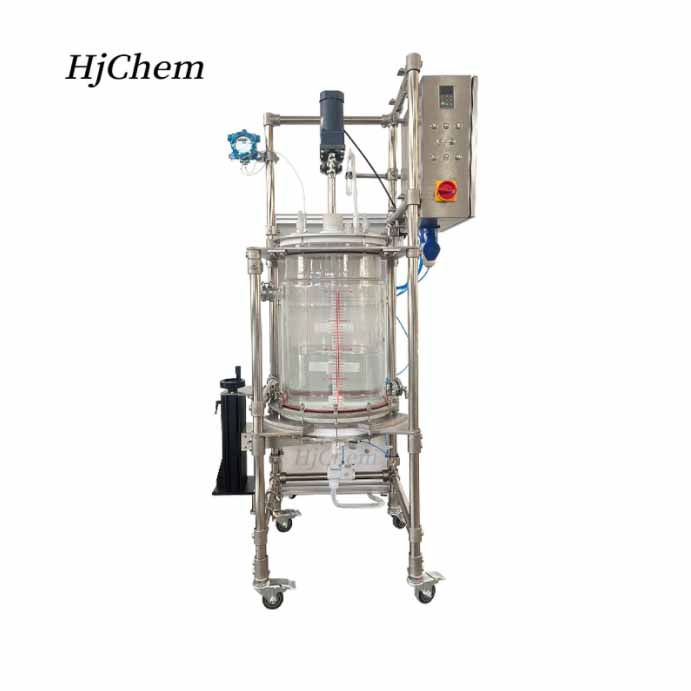Our peptide synthesizer is a laboratory instrument used for the synthesis of peptide.
Basic Technical Specifications:
1. Volume: 100ml, 200ml, 500ml, 1L, 2L, 3L, 5L, 10L, 20L, 30L, 50L, 100L, form laboratory scale to pilot plant and industrial scale.
2. Vessel: Single wall, double wall or triple wall available
3. Working pressure: Full vacuum to 0.05/0.1Mpa
4. Working temperature: -80°C ~ +220°C
5. Filter device: PTFE, glass or stainless-steel, pore size 0.1um to 200um
Peptides are short chains of amino acids linked by peptide bonds, and they play crucial roles in biological processes, drug development and research.
Peptide synthesis equipment simplifies and automates the complex process of peptide synthesis, making it faster, more efficient.
The most common method employed by peptide synthesizer is solid-phase peptide synthesis(SPPS).
What is Solid-Phase Peptide Synthesis(SPPS) ?
Solid-phase synthesis is a common technique for peptide synthesis. Usually, peptides are synthesised from the carbonyl group side (C-terminus) to amino group side (N-terminus) of the amino acid chain in the SPPS method, although peptides are biologically synthesised in the opposite direction in cells. In peptide synthesis, an amino-protected amino acid is bound to a solid phase material or resin (most commonly, low cross-linked polystyrene beads), forming a covalent bond between the carbonyl group and the resin, most often an amido or an ester bond. Then the amino group is deprotected and reacted with the carbonyl group of the next N-protected amino acid. The solid phase now bears a dipeptide. This cycle is repeated to form the desired peptide chain. After all reactions are complete, the synthesised peptide is cleaved from the bead.
The protecting groups for the amino groups mostly used in the peptide synthesis are 9-fluorenylmethyloxycarbonyl group (Fmoc) and t-butyloxycarbonyl (Boc). A number of amino acids bear functional groups in the side chain which must be protected specifically from reacting with the incoming N-protected amino acids. In contrast to Boc and Fmoc groups, these have to be stable over the course of peptide synthesis although they are also removed during the final deprotection of peptides.
For more information, please visit our website:
Peptide Synthesizer
https://njhjchem.com/product/glass-nutsche-filters/custom-peptide-synthesizer-for-lab-pilot-plant/
bio-equip.cn




